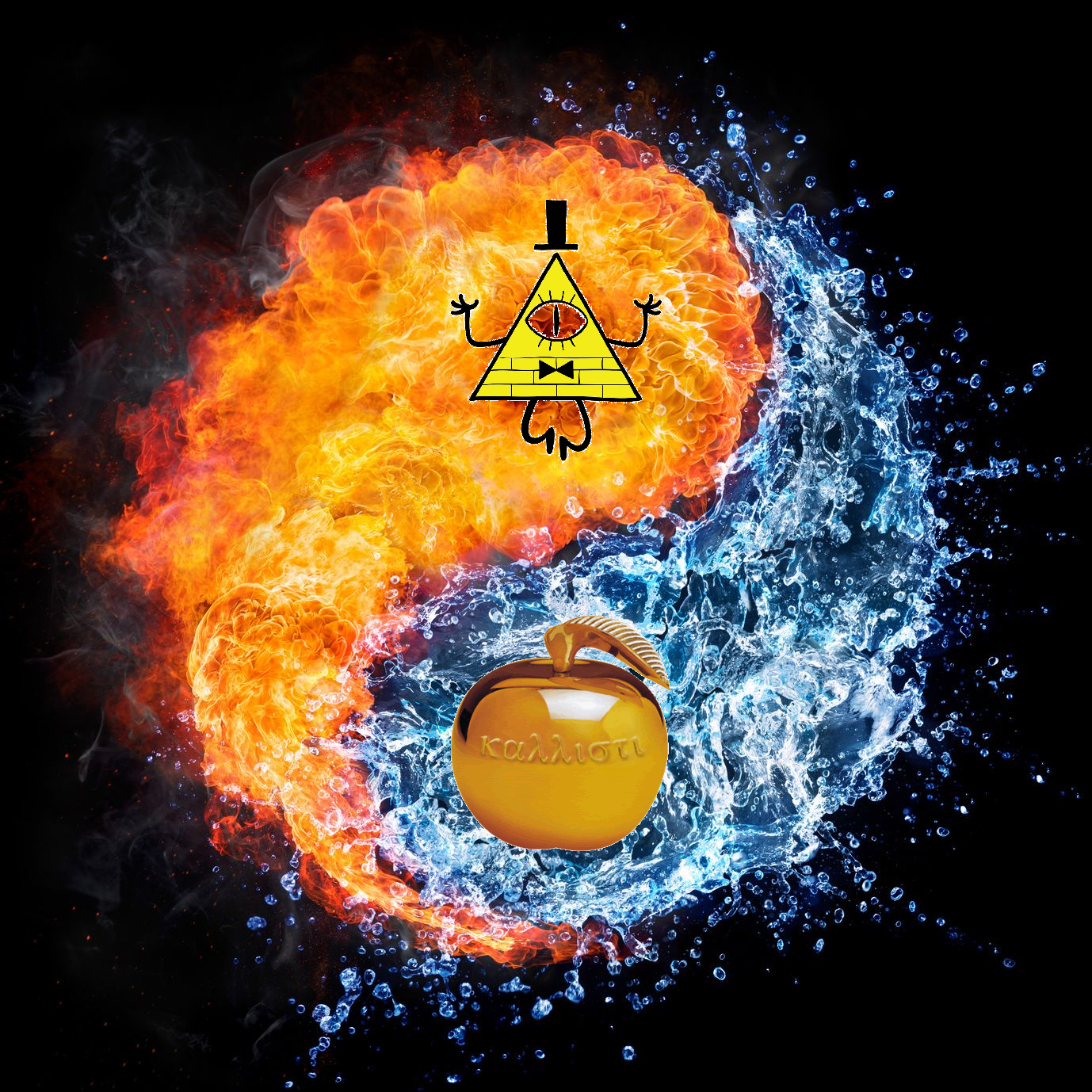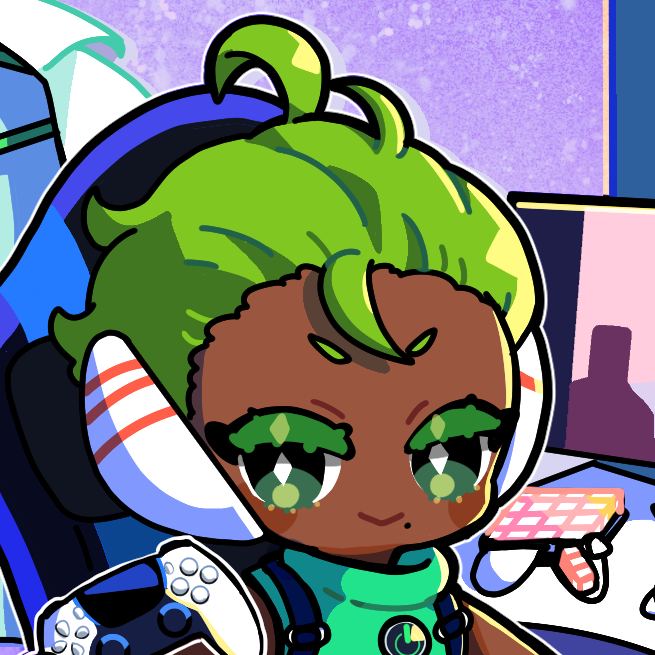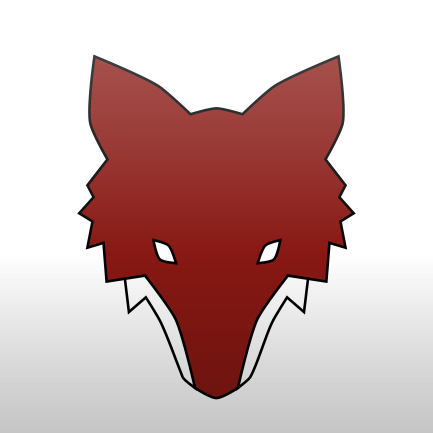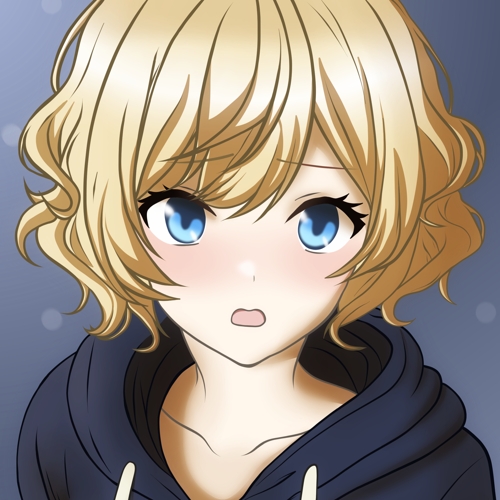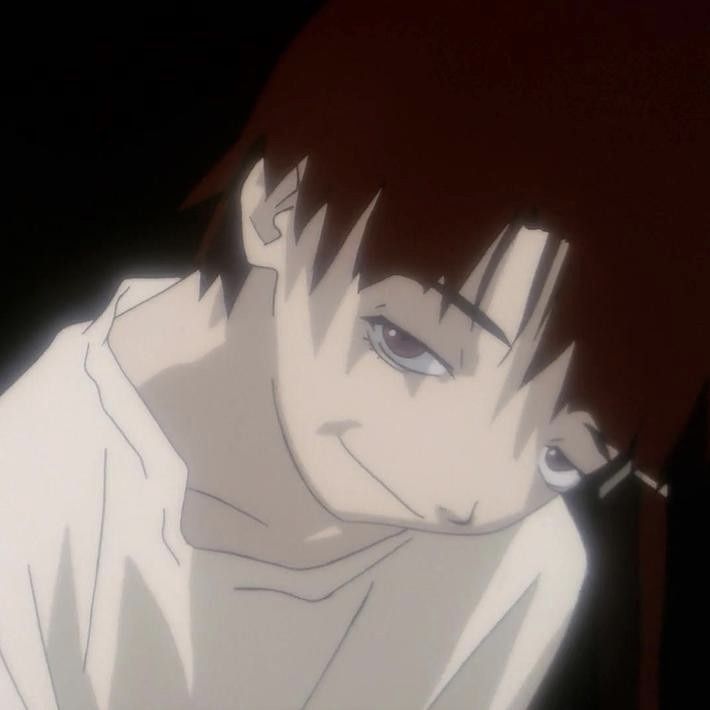Just wondering if enough people are here for posts and discussion about what people are creating for their table top games. If you are and want to share a snippet about what you’re working on, that would be great!
I’ve been working on a D6 based RPG set around the Mediterranean, with establishing trade routes to the east as the main objective. It’s currently a mass of ideas and world building and a random splatter of the actual game mechanics. It’s something I only get to work on every couple of months for a handful of hours so it’s slow going, but it’s really fulfilling to work on.
My current project is a bit like that. Less due to being busy and more just inspiration is a very slow drip.
I know how frustrating that is. There’s been times I’ve had time to work on it but just nothing was coming to me. I’ve found it helpful to explore new games and watch videos and even reading short stories to just jogging the ideas around. But even then sometimes you just get stuck. Keep trucking though!
There’s nothing as frustrating as having time, sitting down, and realizing you have nothing. lol
I’ve got a Knave (OSR) hack I’ve been working on for a long time. Been through a few iterations and currently working on a rather crunchy magic + martial arts system for my setting.
I still haven’t named my setting, probably should at some point. It originated out of being hyperliteral with the idea of planeswalking. You know, if you could literally walk to other worlds. Along the way it picked up a bunch of concepts I thought would be neat divergences from standard fantasy tropes. For instance, the world is monadic animistic. Which means that every object has a spirit and also every spirit is an object with neither the physical or the spiritual description being more true (they’re one and the same.)
I prefer Oldhammer to modern 40k tonally, so have created shall we think of it as a fork from the 40k universe. The conceit is a sector that has been cut off from the outside galaxy by constant almost nearly impenetrable warp storms for the last several thousand years.
Within this bubble my personal Space Marine and Imperial Guard forces exist, as do Ork forces run by a friend. They have history and fluff. I make fluff for the planets and major figures in this sector, creating a personal canon with 40k’s canon being a foundation that I feel comfortable being loose with.
So far most actual gaming has been done with the OnePageRules systems, though I am trying to drum up interest in playing 2e or 3e games for novelty.
The lore around 40k is interesting but I’m not a huge fan of grimdark. My settings and stories are on the noble side (though they can be rather dark, and I’ve inflicted sanity damage on players before.) What would you say is the difference between modern and oldhammer that draws you to the older tone?
Oh I like the dark. The darkness is very important for 40k.
A massive difference between old and current 40k is the amount of mystery and vagueness that existed in Oldhammer. The Primarchs were dead and gone. Everything about the Emperor was a question mark. There were only the smallest snippets of fluff about the Horus Heresy.
It created a particular tone about a universe where the glory of the past was long ago and never coming back. The current universe was sinking stagnation and fighting an eternal fight after humanity had already gotten to the “bad ending”.
Modern 40k has had the Horus Heresy novels, which replace the classy vagueness and mystery with detailed play by plays. Perhaps characters inside the universe don’t know about the details, but we as the audience do, and that changes the entire tone. Rather than Primarchs, the Emperor, and the Heresy having tantalizing rare clues scattered in the lore, you have thousands of detailed pages to explain them all.
Now with Guilliman back, the stagnation is gone and the door to flooding the setting back with Primarchs is open. Every single Little Timmy is screaming that they want their favorite primarch to show up. The setting has this distinctly power rangers and plot moving forward kind of vibe, which is completely opposite to the stagnation of eternal war.
That makes sense. An unwinnable war at the end of civilization is much more grimdark than having these big players moving and shaking things up.
Not for me personally, though I have wanted to do an end of the world tour as presented in Ryuutama as a black dragon campaign. The sort of thing where you can’t change fate, but you can scrabble together to see the ruins of the past and see how people have cobbled together something resembling a life even as the crops fail, the air and water stagnates, and the light of the sun dims.
I’m more a fan of what is usually described as middlehammer with 4th Edition where I got my start and maybe some 5th Edition. It used to be just fluff and background in a setting for your dudes. But nerds today need to have ‘lore’ for everything and it needs to explain all the things in excruciating detail.
Things used to be so much better with the old stuff.
Gaming is gaming, and all posts are welcome; that’s my understanding, anyway. It’s been years since I homebrewed anything for a tabletop game, though. I created a couple of regions-- not whole worlds, just sub-continents-- that were designed for political intrigue. Accepting quests from one local leader would impact your reputation with their rivals, and throwing your support behind a single leader would lead to a variety of crises mid-campaign, depending on their agenda. For example, Alder Goldflagon was a dwarven merchant and aggressive expansionist. Backing his policies would piss off the wood elf faction, and they would respond by refusing to give traders safe passage through the region’s dangerous forests.
Unfortunately, I got a group of players who just wanted to do hack & slash dungeon crawling, so the intrigue was completely wasted on them. That’s why, most of the time, I stick with pre-written materials and just improvise a bunch to suit the group’s play style.
I’ve never been very good at intrigue or really faction play in general. I tend towards a lot of environmental mystery if that makes sense? Maybe it’s been too long, but I’d love to hear more about your intrigue plots!
Don’t remember all the details, but there was a bitter rivalry between a high elf wizard and a human warlord. The high elf wanted to develop magic defenses to replace siege weapons, which would have greatly diminished the importance of the traditional human army. The warlord wanted to build arenas with anti-magic barriers, so mages could be recruited to participate in gladiatorial combat. Not all of the in-fighting was this obvious, but I wanted at least one example that would be easy to spot.
In contrast, there was one leader who was inoffensive and wouldn’t precipitate any crisis if you chose to support him. Naturally, I went out of my way to make him as unlikable as possible, so the average player would be dissuaded from speaking to him unless strictly necessary. He’d be boring, and sometimes unpleasant, but the jobs he’d give the party would always yield the most benefits for the most people.
I think it’s the subtlety across multiple factions that I struggle with. It’s easy enough to do a monster of the week and be subtle about what and why it’s there but the interrelations are a challenge.
I’m not sure if my approach would work for everyone, but I like to have a strong faction leader so I can clearly define their character and think of them like I would think of my own PC. If I have a solid understanding of their motivation, their personality, how smart they are and how they deal with conflict, I can determine how they’d react to moving and shaking in their sphere of influence. A warlord might bristle at the slightest insult, or perceived insult, and be ready to settle a dispute with fists rather than even entertain diplomacy. Depending on which faction he’s picking a fight with, they might ignore his posturing, get intimidated and back down, or try and goad him into doing something stupid.
Other members of a given faction will tend to reflect the leader’s personality, since realistically, that’s the sort of follower a strong leader often attracts: imitators. It’s a bit of a shortcut so I don’t have to create 50 different NPCs that the party may or may not ever meet, but still. I also think that when AI chatbots get a bit more sophisticated, I could use those to literally simulate conversations with characters I design.
That sounds a lot like Icons from a game that I can’t remember the name of atm. The idea being to make faction leaders the definition of the faction. Maybe sometime I’ll remember that advice, lol.
i’m running a fabula ultima campaign and it’s been a lot of fun. very lightweight, JRPG-esque ruleset. I have barely DMed before so it’s a new experience for me, but I’m enjoying it despite the challenges.
On the topic of JRPG rulesets, I will someday run Ryuutama…
What would you say you like about or are challenged by Fabula Ultima?
What I like:
-
very very lightweight. My players do not want to crunch and this games system is perfect for that. Combat is snappy
-
feels like a jrpg. The fabula and ultima mechanics, and the way combat is paced, both feel great.
-
on the topic of ultima, designing villains is a lot of fun
What I don’t like
-
combat is tough for me to design around. I feel like every encounter has been way too easy. But I am also out of grad school now, so I can spend more time on interesting fights.
-
initiative is a little weird
-
you’ll probably burn through the bestiary pretty quickly, so you end up making a lot of unique monsters. Which is fine, but sometimes you just wanna throw a couple skeletons out lol
A lot of the don’t likes are probably just based on my inexperience tbh.
There was an article that I can’t find at the moment, that talked about monsters that changed the way I approach them.
The idea is, monsters are a symptom. There’s something else that’s wrong. You might need to kill them but that won’t solve the problem and eventually a new monster will appear.
So the way I approach things is by thinking about what’s wrong and how that might manifest. Often the same “monster” works in multiple cases and the underlying cause makes each instance feel different because it acts differently based on the cause.
Ooo, thanks for the tip!
-
I’m working on and off on writing new content for Opus Anima (only available in German) which has an amazing steampunk horror setting and a very simple but flexible D2 pool system but sadly got abandoned by the publisher after only the core rulebook and a softcover book with an alternate subsetting.
The world that Opus Anima is set in used to be an outer space colony, so aside from humans, we get several other sentient species such as the Brunad (spider centaurs), Abara (genetically engineered humanoids with four insect-like arms on their backs), Sanherib (somewhere between frogs and flightless birds) and Tel’Pathar (hybrids between humans and an unknown humanoid alien race that can read other peoples’ feelings). A few centuries ago, the planet almost got destroyed and now people live on huge shards that float around what’s left of the planet’s core. In the post-war charos and because of the dense cloud of dust and debris (called the aether) around those shards, all outside contact was lost and most technology regressed to about the late 19th/early 20th century. The setting draws a lot from Victorian England and the German Empire. Technology is mostly driven by steam, scientists constantly (re)discover the secrets of the world, aethership captains explore and colonize the world beyond their home shard and engineers have built a huge steel scaffold that connects several shards to form a thriving empire. What used to be lower layers of the planet’s crust is now just the underside of a shard and can be mined for fibrite, a metal that seems to be able to react to emotions and occasionally change its form on its own. A broken tool made out of fibrite might mend itself if its owner has always treated it with respect. Fibrite has become an important resource for all sorts of technology from cameras to steampowered robots that have reached almost human-like sentience and are currently protesting in the streets to be accepted as first class citizens.
But the planet’s destruction has also caused some less obvious changes. In some areas, the laws of physics are just ever so slightly off. Mirrors show images with subtle differences from reality, shadows fall in the wrong direction and solid rocks gently float downwards when dropped. In other places, it’s more extreme: trees start growing human organs and words disappear from books after someone reads them. There are even rumors about people being able to conciously manipulate these phenomena to become invisible, heal mortal wounds, shapeshift into other faces or absorb the knowledge of a whole library within seconds. Scientists are currently investigating this so-called “distortion” and theories range from a side effect of the use of fibrite to some property of the aether dust to outright supernatural causes.
The main setting lets you play as a “soulless” who got most of their soul stolen by an ancient cult. Most people die from this procedure but the soulless got saved by a godlike entity who filled the void where the soul once was with a tiny bit of their supernatural essence. While this costs them most of what made them human, they slowly learn to use this essence to unlock supernatural powers that aid them in the search for their lost souls.
I’m mainly writing campaign modules for the spinoff setting Opus Anima Investigation which lets you play as members of the “Investigation Group for Bizarromancy and Occult matters” of the local police force. Imagine something between X Files, Fringe, Warehouse 13 and SCP. Their job is to uncover, investigate and contain instances of distortion that could pose a danger to the general public. So far I’ve written six modules, some inspired by SCP entries, some entirely my own.
Edit: I’m in contact with one of the original authors and there’s a chance that if OA ever gets a second edition or an English translation, some of my works might get included.
That’s very cool! Hopefully a second edition gets made since that would be amazing to get your work included!
I am creating a combat-focused TTRPG based on Turkic mythology, for two months now. It’s d10 based. My main design goal is to make character building very choice-based. I’m trying to achieve this by making almost everything quickly branch out at least once.
For example, when you spend a point in an “attribute”, you then have to choose to give that point to either potency or precision for that attribute.
Debuff durations, damage, healing and more increase with the relevant potency stat. To-hit rolls increase with the relevant precision stat. Since “attributes” are capped, these compete with each other.
It’s currently in early stages so there are no character classes yet, but from the play-testing I’ve done, it’s already fun without classes lol.
RPG design is a lot of fun! Glad to hear you’re working on one.
deleted by creator
I’m not doing anything other than character building for my current DnD game. At one point, I was playing both Pathfinder and 5e at the same time and realized just how bad 5e defined grappling. I spent a couple of weeks in my free time coming up with a way to define what you can do while grappled/grappling in 5e. I tried to make it more viable of a playstyle while not making it too broken. Sadly, I never got to actually playtest it with a group as we were swapping people around for DMing so they could all get a taste of it and none were experienced enough to allow for the playtest.
I would be more than happy to share some about what I had done, I would just need to find the document. I would really love the idea of a character that is a bar brawler that just grapples and throws people around!
I have and do regularly struggle with how to make non-attack builds viable. I have a game that does a good job of it, but it’s not really setup for being a D&D replacement since it’s a very narrative game that takes inspiration from Technoir, Fate, and to a limited extent Blades in the Dark.
I like playing things that aren’t typical or really useful in some ways. I just want the experience to be unique and fun. What are some of the non-attack builds that you have thought about and/or tried that really stuck out for you?
I’m a huge fan of flavor>>>>>usefulness. My current character has a self imposed fault that causes me to roll wisdom saves when I use fire spells from my top two spell slots. If I fail, I get disadvantage on all mental stats and advantage on all physical. It hasn’t happened much yet. Mainly when a friend is being dangerously hurt. Then my guy gets a little heated and burns spells at high level and faces the consequences, but it is worth it at the time.
One we tried to do recently is an MMO style tank. We were playing FF14 and wanted to do something similar. Aggro is kind of complicated and 5e (for instance) hamstrings you with limited reactions if you can’t find a door to block.
Our solution was that Aggro is a condition, similar to Fear but reversed. You can inflict it on someone instead of attacking. It’s automatic with a removal DC equal to 8+Con+Prof (using 5e math, we use Knave so it’s just Con defense.) On turn or whenever someone deals damage they can Wis save to remove Aggro.
That is a really cool idea. Sounds like it could have been a lot of fun and really scary at the same time in some situations.
It worked fairly well. We went through a number of designs and that was the simplest we thought would work. There’s still a fair amount of difficulty establishing Aggro against groups but that’s basically a feature.
I’m working on a D&D homebrew campaign with 11 to 12 planned adventures. It’s planned to take the players on adventures to the inner planes (the elemental planes). I’ve planned the overarching plot for the most part already, but I just need to design the contents of the individual adventures, their locations, goals etc.
Aside from the elemental planes, what sort of themes are you looking at exploring?
Loss and unhealthy ways of dealing with loss. Also the moral struggle when it comes to greater good vs. personal feelings (looking to make this one a theme throughout the campaign).
Currently I’ve been reading Witchburner as a side plot line in my current Pathfinder world. I’m using the Midgard setting as a base. Right now I’m trying to write a vampire world takeover that involves them trying to kill Baba Yaga while the PCs attempt to find out this plan and stop it. I’m also working on implementing mechs into it because I’ve been bitten by the Xenogears bug.
**CONTENT WARNING FOR CYBERPUNK Sexual Abuse, Drugs and Murder **
Additionally I’m writing a Cyberpunk Red homebrew campaign that discusses topics such as parasocial relationships, the dangers and downsides of becoming too involved in them, and porn addiction. The players have stumbled upon a terrible human trafficking ring, funded by SovOil’s CEO after killing his daughter due to her mind being taken over by a relic which contained an anticorporate revolutionary hell bent on freeing Neo-Soveit Russia. It’s really dark but I felt like CBP was the world to tell this in
A really cheap way to do mechs might be to steal the Synthesist Summoner as a gestalt class. Otherwise, Lancer is sort of the go to for mechs which shouldn’t be too hard to just bolt on the mech parts.
I’m not familiar with Witchburner, what’s that about?
Lancer is, the problem with Lancer I’ve been having is trying to get humanoid and organic enemies. So while I think of a way to do it I’m running Pathfinder.
Witchburner is an OSR module that’s about the players being Inquisitors sent to burn a witch in a remote location. SPOILERS ahead.
|| There is no witch|| And the players have to prove that there is either a witch amongst them (frame an NPC) or run away (if they can, it’s dangerous in those woods. It’s a social deduction adventure and less centered on any kind of complex combat and more on the relations they have with the NPCs
I wonder if Summoner Eidolons might not just be the way to go then? They come in a variety of forms and Synthesist gives you a framework for how they merge with people. Obviously there will need to be some narrative restrictions in place to make the whole “it’s actually a mech” work but otherwise it’s at least premade and works with the Pathfinder rules.
In retrospect, I don’t know what else Witchburner could have been about lol.
I’m working on and off on writing new content for Opus Anima (only available in German) which has an amazing steampunk horror setting and a very simple but flexible D2 pool system but sadly got abandoned by the publisher after only the core rulebook and a softcover book with an alternate subsetting.
*The world that Opus Anima is set in used to be an outer space colony, so aside from humans, we get several other sentient species such as the Brunad (spider centaurs), Abara (genetically engineered humanoids with four insect-like arms on their backs), Sanherib (somewhere between frogs and flightless birds) and Tel’Pathar (hybrids between humans and an unknown humanoid alien race that can read other peoples’ feelings). A few centuries ago, the planet almost got destroyed and now people live on huge shards that float around what’s left of the planet’s core. In the post-war charos and because of the dense cloud of dust and debris (called the aether) around those shards, all outside contact was lost and most technology regressed to about the late 19th/early 20th century. The setting draws a lot from Victorian England and the German Empire. Technology is mostly driven by steam, scientists constantly (re)discover the secrets of the world, aethership captains explore and colonize the world beyond their home shard and engineers have built a huge steel scaffold that connects several shards to form a thriving empire.
But the planet’s destruction has also caused some less obvious changes. What used to be lower layers of the planet’s crust is now just the underside of a shard and can be mined for fibrite, a metal that seems to be able to react to emotions and occasionally change its form on its own. A broken tool made out of fibrite might mend itself if its owner has always treated it with respect. Fibrite has become an important resource for all sorts of technology from cameras to steampowered robots that have reached almost human-like sentience and are currently protesting in the streets to be accepted as first class citizens. *




